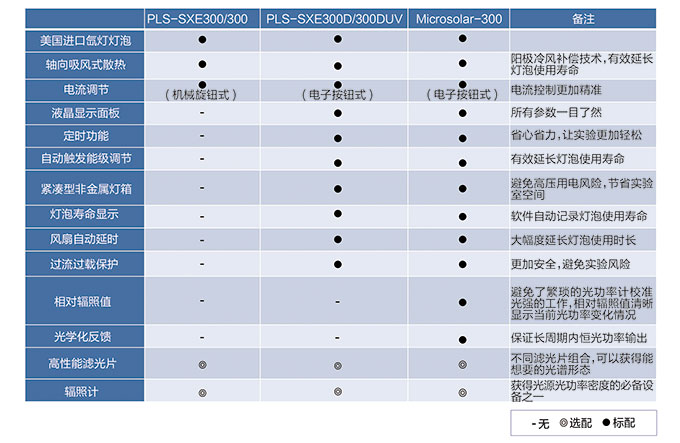Since its establishment in 2006, Perfectlight has been pioneering in introducing the PLS-SXE300 xenon lamp source based on EXLITE company's xenon lamp bulb, with a cumulative sales volume of approximately 8000 units. This specialized xenon lamp source for photocatalysis has addressed a gap in the domestic market. Over the years, we have been continuously tracking the developments in photocatalysis research, leading to the successive launch of products such as the compact PLS-SXE300C and PLS-SXE300D xenon lamp sources, the constant-intensity Microslar300 xenon lamp source, the high uniformity PLS-FX300HU fiber optic light source suitable for PEC photocatalysis, as well as LED light sources and LD light sources that offer improved monochromaticity and generate less heat. So, how does one choose the right light source? The following key factors need to be carefully understood:
Illumination Irradiance
For experiments involving photocatalytic hydrogen production, photocatalytic degradation, and CO₂ reduction, a light source with an intensity greater than 600 mW/cm2 is generally chosen. We recommend using the 300/300UV series. For experiments related to photocatalysis, a light source with an intensity of 100-300 mW/cm2 is recommended. It's advisable not to use excessively high-intensity light sources. We suggest using the PLS-FX300HU model. Research related to solar cells usually requires the use of a solar simulator with an intensity of 100 mW/cm2. We recommend the XES-40S3-TT-200 AAA-grade solar simulator.
Light Source Stability
Due to the limited lifespan of xenon lamp bulbs, their intensity gradually decreases over a certain time scale (>10 h). As a result, standard xenon lamp sources are not suitable for experiments requiring longer testing durations. By utilizing a light feedback system to control and adjust the xenon lamp current, it's possible to maintain stable luminous power over an extended period. The recommended light source model for this purpose is Microsolar300.
Uniformity of Light Spot
In experimental scenarios like photocatalysis and solar cell performance testing, poor uniformity in light radiation intensity can lead to inaccurate experimental results and low repeatability. In such cases, the uniformity of the light spot becomes a crucial experimental parameter. Recommended light source models for this aspect include PLS-FX300HU, CHF-XM500, and XES-40S3-TT-200 AAA-grade solar simulator.
Spectral Characteristics
Photocatalysis research often involves considering the performance of reactions under specific wavelength ranges. For instance, measuring quantum yields requires monochromatic light, which can be obtained through laser sources, wavelength-tunable light sources, LED monochromatic light sources, or bandpass filters.
